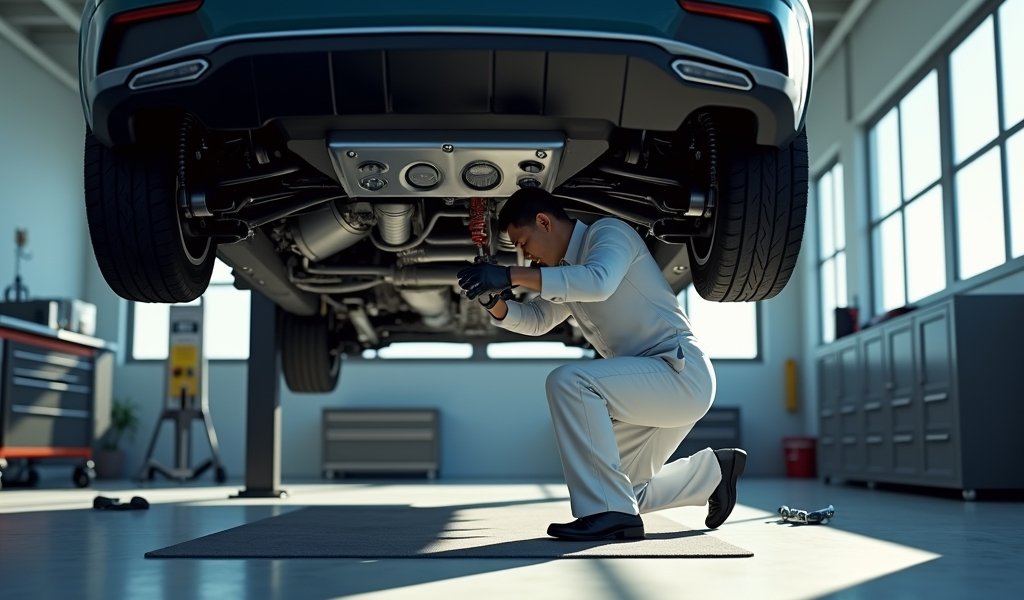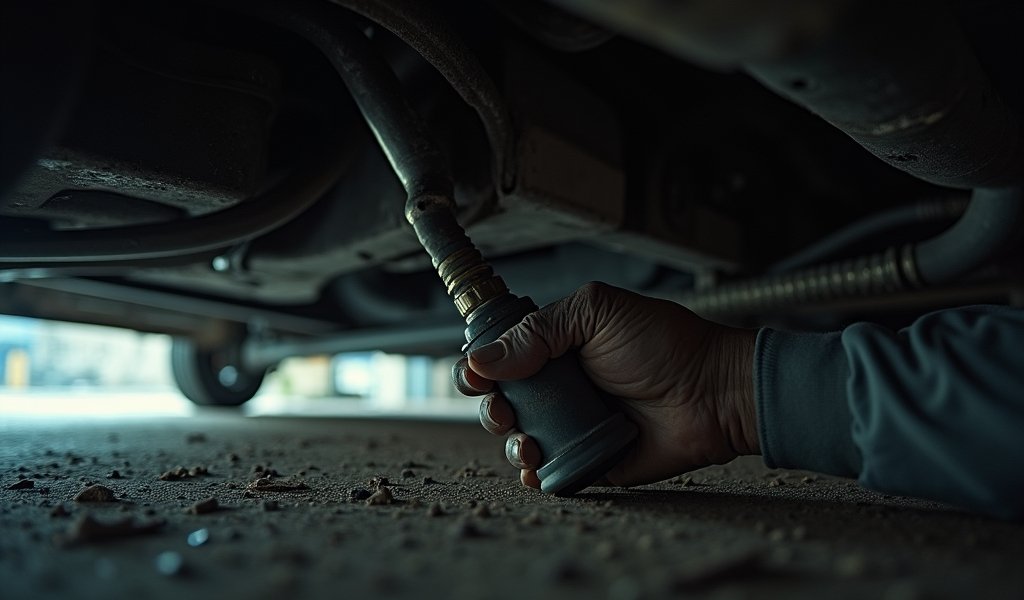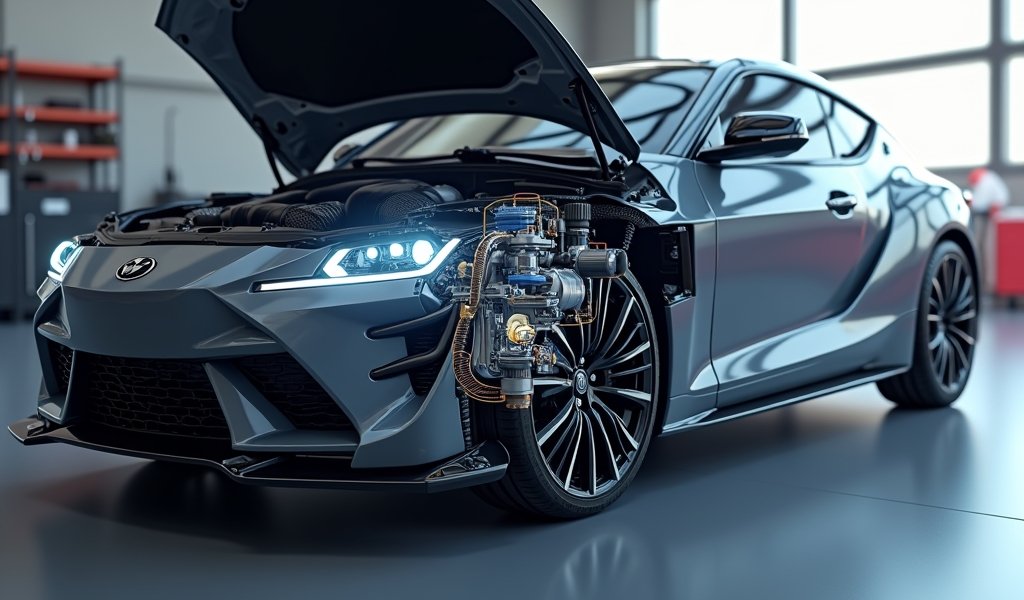Overview
This article provides a detailed guide to understanding, diagnosing, and repairing fuel tank vent valve issues in vehicles, covering symptoms like difficulty filling gas tanks, erratic fuel gauges, and reduced fuel economy. It offers step-by-step DIY repair instructions along with preventative maintenance tips, while explaining how these valves maintain proper tank pressure to ensure optimal vehicle performance.
Table of Contents
- Understanding the Fuel Tank Vent Valve
- Signs Your Fuel Tank Vent Valve Might Be in Trouble
- How Your Fuel Tank Vent Valve Actually Works
- Common Fuel Tank Vent Valve Issues
- Tools You’ll Need for the Fix
- DIY Fuel Tank Vent Valve Repair: Step-by-Step
- Preventative Maintenance Tips
- When to Seek Professional Help
- Conclusion
- Frequently Asked Questions
Understanding the Fuel Tank Vent Valve
Your vehicle’s fuel tank vent valve might be one of the most overlooked components under your car, but it plays a critical role in your vehicle’s performance. When this small valve malfunctions, it can cause a cascade of issues that leave you scratching your head at the pump or staring at that annoying check engine light.
In my 20 years as a mechanic, I’ve seen countless frustrated drivers dealing with fuel tank vent valve problems without realizing the actual culprit. This humble component essentially allows your fuel tank to “breathe” properly. Without proper venting, your fuel system can develop vacuum or pressure conditions that wreak havoc on your vehicle’s operation.
Think of your fuel tank as a sealed container that needs balanced pressure to function correctly. Just like you can’t drink easily from a completely sealed water bottle, your engine can’t efficiently draw fuel from a tank that can’t equalize its pressure. The fuel tank vent valve maintains this crucial balance by allowing air to enter the tank as fuel is consumed.
Additionally, this valve works with your evaporative emission control system to properly handle fuel vapors, directing them to the charcoal canister rather than releasing them into the atmosphere. It’s an elegant solution that improves efficiency while protecting our environment.
Signs Your Fuel Tank Vent Valve Might Be in Trouble
How can you tell if your fuel tank vent valve is causing problems? There are several telltale signs that should trigger your mechanic’s intuition:
- Difficulty filling your gas tank – the pump keeps clicking off prematurely
- Fuel gauge acting erratically after filling up
- Engine stalling or hesitation, particularly after refueling
- Reduced fuel economy without any obvious explanation
- Strong gasoline odor around your vehicle
- Check engine light illumination (often with EVAP system codes like P0455 or P0456)
- Visibly deformed or collapsed fuel tank (in extreme cases)
Many drivers mistakenly blame their fuel pump or injectors when experiencing these symptoms. While those components could be culprits, don’t overlook the humble vent valve. It’s often the source of these headaches and fortunately one of the more straightforward fixes you can tackle yourself.

How Your Fuel Tank Vent Valve Actually Works
Let’s break down the mechanics without getting too technical. Your fuel tank vent valve operates on a beautifully simple principle. As you use fuel, the liquid level in your tank drops, creating a potential vacuum. The vent valve opens to allow atmospheric air in, equalizing the pressure and ensuring fuel can flow freely to your engine.
When temperatures rise and fuel expands, the valve works in reverse, allowing excess pressure to escape in a controlled manner. Rather than venting these fuel vapors to the atmosphere (which would be environmentally harmful and waste fuel), the system routes these vapors to the evaporative emissions system where they’re captured in the charcoal canister.
This two-way regulation maintains the ideal pressure in your tank for both safety and performance. Too much vacuum can strain your fuel pump and cause delivery problems, while excess pressure could damage seals or lead to dangerous leaks. The vent valve maintains this delicate balance automatically with every temperature change and fuel level fluctuation.
Many modern vehicles have incorporated electronic valves and sensors into this system, but the fundamental purpose remains unchanged: keeping your fuel system at optimal pressure for both performance and emissions control.
Common Fuel Tank Vent Valve Issues
After diagnosing countless fuel system problems over my career, I’ve found these to be the most common issues affecting vent valves:
Clogging
By far the most frequent problem is simple clogging. Dirt, debris, spider webs (yes, spiders love fuel systems!), and even corrosion can obstruct the small vent passages. The valve operates through tiny openings, making it particularly susceptible to blockages that can significantly impact its function.
Sticking Valve Mechanisms
The mechanical components of the valve can become sticky over time, especially after exposure to fuel vapors that leave residue. A valve stuck in either the open or closed position can’t properly regulate pressure, leading to a range of performance issues.
Environmental Damage
Since vent valves are often located in exposed positions under the vehicle, they’re subject to road salt, water, and debris impact. This harsh environment can cause accelerated deterioration of the valve components or connecting hoses.
Cracked Housings
Plastic valve housings can become brittle over time, especially in regions with extreme temperature variations. Even hairline cracks can disrupt proper operation and create emissions leaks that trigger check engine lights.
The good news is that many of these issues can be resolved through cleaning or relatively simple valve replacement. The key is catching them before they cause more extensive damage to your fuel system or create unsafe conditions.
Tools You’ll Need for the Fix
Before diving into your DIY repair, gather these essential tools to make the job smoother:
Must-Have Items:
- Socket set with various sizes (10mm, 12mm, and 14mm are commonly needed)
- Screwdrivers (both flathead and Phillips)
- Pliers (standard and needle-nose for tight spaces)
- Safety glasses and chemical-resistant gloves
- Compressed air (canned or compressor with blower nozzle)
- Clean rags and a catch pan for any fuel drips
Helpful Additions:
- Flashlight or headlamp (vent valves are often in dark, hard-to-reach areas)
- Small wire brush or pipe cleaners for detail cleaning
- Automotive-grade electrical contact cleaner
- OBD-II code reader (to clear check engine lights after repair)
- Jack and jack stands if the valve is located under the vehicle
Having the right tools not only makes the job easier but also safer. When working with fuel systems, proper preparation is half the battle. And remember, patience is perhaps your most valuable tool—rushing through fuel system work can lead to frustration and potentially dangerous mistakes.

DIY Fuel Tank Vent Valve Repair: Step-by-Step
Let’s roll up our sleeves and fix that troublesome vent valve. I’ve broken this down into manageable steps that even novice DIYers can follow:
Step 1: Locate Your Fuel Tank Vent Valve
This can sometimes be the trickiest part. The location varies significantly by vehicle make and model, but common spots include:
- Near the fuel filler neck assembly
- On top of the fuel tank (may require lowering the tank for access)
- Along the EVAP lines running from the tank to the engine
- Near the charcoal canister (typically mounted near the rear of the vehicle)
Consult your vehicle’s service manual or check online repair resources specific to your model. Taking a photo before disconnecting anything will save you headaches during reassembly.
Step 2: Safety First
Before touching anything, take these non-negotiable safety precautions:
- Ensure the engine is completely cool and has been off for at least 30 minutes
- Disconnect the negative battery terminal to prevent any sparks
- Work in a well-ventilated area away from any ignition sources
- Have a fire extinguisher within reach (better safe than sorry)
- Wear safety glasses and chemical-resistant gloves
Step 3: Inspection
Carefully examine the valve and surrounding components:
- Look for obvious cracks, damage, or corroded connections
- Check if the valve moves freely (if design allows for external inspection)
- Inspect hoses for splits, cracks, or disconnection
- Note any fuel residue that might indicate leaks
Step 4: Cleaning Procedure
If inspection suggests clogging rather than mechanical failure:
- Carefully disconnect the valve from its mounting position and attached hoses (remember that photo you took!)
- Use compressed air to blow through the valve in both directions, dislodging any debris
- For stubborn clogs, soak the valve in carburetor cleaner (if it’s all-metal) or gently clean with electrical contact cleaner (if it has plastic or rubber components)
- Use a small wire brush or pipe cleaner to carefully remove any visible deposits
- Allow everything to dry completely before reinstallation
Step 5: Replacement (If Necessary)
If cleaning doesn’t solve the issue or you find damage:
- Purchase a replacement valve that matches your specific vehicle (OEM parts are recommended)
- Compare the new part with the original to confirm it’s an exact match
- Install the new valve, ensuring all connections are secure and properly oriented
- Double-check that no hoses are kinked or pinched
Step 6: Testing
After reinstallation:
- Reconnect the battery and start the engine
- Listen for any unusual sounds and check for fuel odors
- Take a short test drive, paying attention to engine performance
- Use your OBD-II scanner to clear any stored fault codes
- Monitor your next refueling to ensure normal operation
This repair typically takes 1-2 hours, depending on your vehicle design and the valve’s accessibility. The satisfaction of fixing it yourself (and the money saved) makes it worthwhile for most DIY-inclined owners.
Preventative Maintenance Tips
An ounce of prevention is worth a gallon of fuel! Here’s how to keep your fuel tank vent valve operating smoothly:
- Avoid overfilling your tank—stop at the first click of the pump rather than “topping off”
- Ensure your gas cap is properly tightened after each fill-up
- Use quality fuel from reputable stations to minimize contaminants
- Consider a fuel system cleaner every 5,000-10,000 miles to reduce residue buildup
- Periodically inspect visible fuel system components for damage, especially before and after winter in areas with road salt use
- When washing your engine bay or undercarriage, avoid direct high-pressure spray on fuel system components
These simple habits can significantly extend the life of your fuel system components and help you avoid those frustrating symptoms of vent valve failure. Regular attention to these details costs nothing but can save you hundreds in repairs.
When to Seek Professional Help
While many fuel tank vent valve issues can be resolved with DIY methods, some situations call for professional intervention. Consider seeking help from a qualified mechanic if:
- You can’t locate or access the valve after reasonable effort
- Your vehicle has a complex EVAP system with integrated electronic components
- The check engine light returns immediately after your repair attempt
- You notice fuel leaks that persist after your repair
- Your vehicle requires specialized tools or programming after component replacement
- You’re uncomfortable working with fuel system components
A professional diagnosis typically costs $75-150, with complete repairs ranging from $200-450 depending on your vehicle make and model. While this exceeds the DIY cost (typically $30-100 for parts), it includes proper testing and may come with a warranty on the work.
When talking with your mechanic, be specific about the symptoms you’ve experienced and any repair attempts you’ve already made. This information helps them zero in on the problem more efficiently, potentially saving you diagnostic time and expense.
Conclusion
Your fuel tank vent valve may be small, but its impact on your vehicle’s performance is substantial. When functioning correctly, you’ll never notice it—and that’s by design. But when problems arise, addressing them promptly can save you from frustration, poor performance, and potentially expensive damage to other fuel system components.
The beauty of this particular repair is its accessibility to DIY enthusiasts. With basic tools, some mechanical aptitude, and careful attention to safety, most drivers can resolve common vent valve issues themselves. The satisfaction of fixing your own vehicle is matched only by the relief of seeing those frustrating symptoms disappear.
Remember that your fuel system operates as an integrated whole—each component affects the others. By maintaining your vent valve and addressing issues promptly, you’re contributing to the overall health and longevity of your vehicle.
Whether you tackle the job yourself or seek professional help, understanding how your fuel tank vent valve operates empowers you to make informed decisions about your vehicle’s maintenance. And that knowledge is perhaps the most valuable tool in any vehicle owner’s arsenal.
Frequently Asked Questions
How do I know if my fuel tank vent valve is bad?
Common symptoms include difficulty filling your gas tank, premature pump shutoffs, reduced fuel economy, and a check engine light related to EVAP codes. You might also notice strong fuel odors or poor engine performance after refueling.
Can you drive with a bad fuel tank vent valve?
While possible, driving with a faulty vent valve isn’t recommended as it can cause reduced performance, potential fuel system damage, and unnecessary emissions. The symptoms typically worsen over time and could leave you stranded if the problem progresses.
How much does it cost to replace a fuel tank vent valve?
DIY replacement typically costs $30-100 for parts depending on your vehicle make and model. Professional replacement ranges from $200-450 including parts and labor, with luxury or complex vehicles at the higher end of that range.
Can a bad vent valve cause check engine light?
Yes, a malfunctioning vent valve commonly triggers the check engine light with EVAP system codes like P0455, P0456, or P0457. These codes indicate evaporative emission system leaks which the computer detects when the vent valve isn’t operating correctly.
How often should a fuel tank vent valve be replaced?
There’s no scheduled replacement interval as vent valves often last the vehicle’s lifetime when properly maintained. Replace only when symptoms of failure appear or during fuel system repairs where the valve shows visible damage or contamination.

